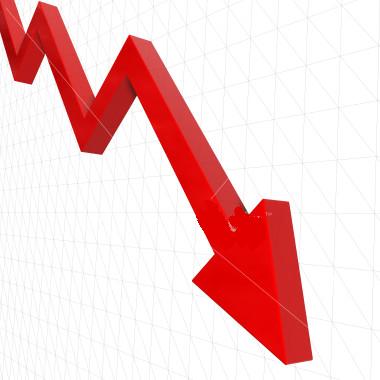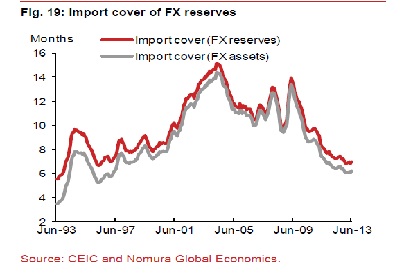In the early 16th century the Spaniards captured large parts of what is now known as South America. The area had large deposits of silver and gold. As I write in my book Easy Money: Evolution of Money from Robinson Crusoe to the First World War: “The precious metals were melted and made into ingots so that they could be easily transported to Spain. Between 1500 and 1540, nearly 1,500 kg of gold came to Spain every year on an average from the New World.” i
Gold wasn’t the only precious metal coming in. A lot of silver came in as well. As I write in Easy Money: “One of the biggest silver mines was found in Potosi, which is now in Bolivia, in 1545. Potosi is one of the highest cities in the world and is situated at a height of 4,090 m. Given the height it sits on, it took Spaniards sometime to get there. Here a mountain of silver of six miles around its base was discovered.ii The mountain or the rich hill, as it came to be called, generated nearly 45,000 tonnes of silver between 1556 and 1783. iii“
Most of this new found silver was shipped to Seville in Spain where the mint was. In the best years some 300 tonnes of silver came in from silver mines in various parts of South America.iv
Once the gold and silver started to land on their shores, the Spaniards became proficient at spending it rather than engaging themselves in productive activities. Easy money had spoiled them and they produced very little of their own. Once this happened everything had to be imported. Weapons came from the Dutch, woolens from the British, glassware from the Italians, and so on.v It also led to Spaniards buying goods like bangles, cheap glassware, and playing cards from foreigners for the sheer pleasure of buying them.
As Thomas Sowell writes in Wealth, Poverty and Politics: “The vast wealth pouring into Spain [in the form of gold and silver from South America]… allowed the Spanish elite to live in luxury and leisure, enjoying the products of other countries, purchased with the windfall gain of gold and silver. At one point, Spain’s imports were nearly twice as large as its exports, with the difference being covered by payments in gold and silver… It was a source of pride, however, that “all the world” served Spain, while Spain “serves nobody”.”
Dear Reader, you must be wondering, why have I chosen to point out all this history so many centuries later. The point I am trying to make is that there is an equivalent to what happened in Spain in the 16th century in this day and age. It is the United States of America.
Like Spain, the total amount of good and services that the United States imports is much more than what it exports. The ratio of the imports of the United States to its exports was around 1.23 in 2016. The difference between the imports and the exports stood at $503 billion. In fact, if we look at the imports and the exports of goods, the ratio comes to around 1.51.
The point being that like Spain, the United States imports much more than it exports. Spain had an unlimited access to money in the form of gold and silver mines of South America. This gold and silver over a period of time was mined and shipped to Spain and in turn used by Spaniards to buy stuff from other parts of the world.
What is the equivalent in case of the United States of America? The dollar. The US dollar is the international reserve currency. It is also the international trading currency. As George Gilder writes in The Scandal of Money-Why Wall Street Recovers But the Economy Never Does: “Today it [i.e. the dollar] handles more than 60 percent of world trade, denominates more than half the market capitalization of world stocks, and partakes in 87 percent of global currency trades.”
Spain had almost unlimited access to the gold and silver from South America. Along similar lines, the United States has unlimited access to the dollar. Other countries need to earn these dollars by exporting goods and services. The United States needs to simply print the dollars (or digitally create them these days) and hand it over for whatever it needs to pay for.
While the unlimited access to gold and silver was Spain’s easy money, the dollar is United States’ easy money. And given this, it isn’t surprising that like Spain, the United States imports much more than it exports. This basically means that the country consumes much more than it produces. Also, while the Spaniards had to face the risk of gold and silver ultimately running out, the United States does not face a similar risk because dollar is a fiat currency unlike gold, and can be created in unlimited amounts. As long as dollar remains the global reserve currency and trading currency, the United States can keep creating it out of thin air. Of course, the role of the United States in global politics will be to ensure that the dollar continues to remain the reserve and trading currency. Having the biggest defence budget and military in the world, will help.
The supply of silver in Spain peaked around 1600 and started to fall after that. But the spending habits of people did not change immediately, leading to Spain getting into debt to the foreigners. The government defaulted on its loans in 1557, 1575, 1607, 1627, and 1647.vi
One impact of access to the easy money in the form of gold and silver, was a huge drop in human capital in Spain. As Sowell writes: “What this meant economically was that other countries developed the human capital that produced what Spain consumed, without Spain’s having to develop its human capital… Even the maritime trade that brought products from other parts of Europe to Spain was largely in the hands of foreigners and European businessmen flocked to Spain to carry out economic functions there. The historical social consequence was that the Spanish culture’s disdain for commerce, industry and skilled labour would be a lasting economic handicap bequeathed to its descendants, not only in Spain itself but also in Latin America.”
So, what is human capital? Economist Gary Becker writes: “Economists regard expenditures on education, training, medical care, and so on as investments in human capital. They are called human capital because people cannot be separated from their knowledge, skills, health, or values in the way they can be separated from their financial and physical assets.”
What is happening on this front, in case of the United States? As Michael S Christian writes in a research paper titled Net Investment and Stocks of Human Capital in the United States, 1975-2013, published in January 2016: “The stock of human capital rose at an annual rate of 1.0 percent between 1977 and 2013, with population growth as the primary driver of human capital growth. Per capita human capital remained much the same over this period.”
So, over a period of more than 35 years, the per capita American human capital has remained the same. And this is clearly not a good sign.
Further, unlike Spain which ultimately ran out of gold and silver, given that there was only so much of it going around in South America, the United States does not face any such risks given that dollar is a fiat currency and can be printed or simply created digitally.
But like Spain, the access to this easy money will ensure that in the years to come, the United States will continue to import more than it exports. This will go against the new President Donald Trump’s plan to make America great again. His basic plan envisages increasing American exports and bringing down its imports. But as long as America has access to easy money in the form of the dollar, the chances of that happening are pretty low because it will always be easier to import stuff by paying in dollars that can be created from thin air, than manufacture it locally.
The column was originally published on Equitymaster on March 14, 2017




